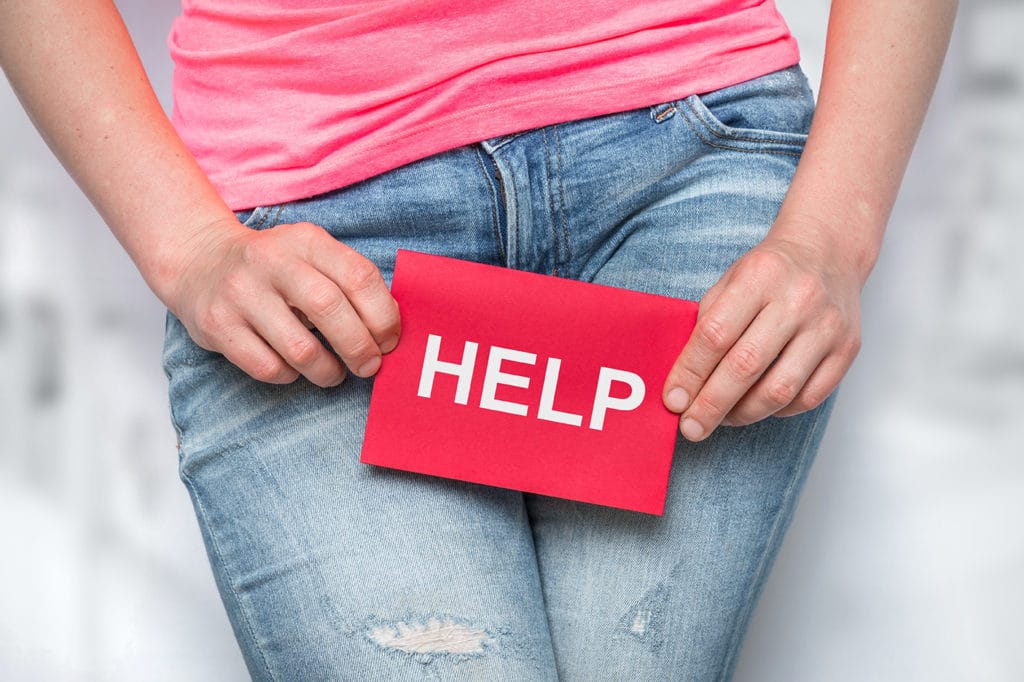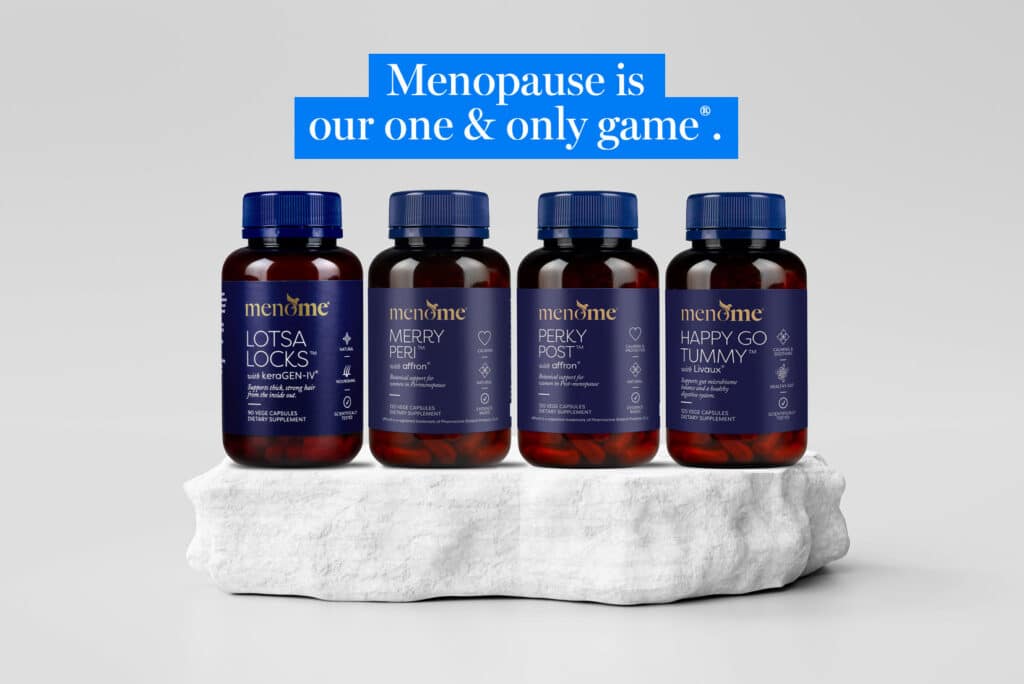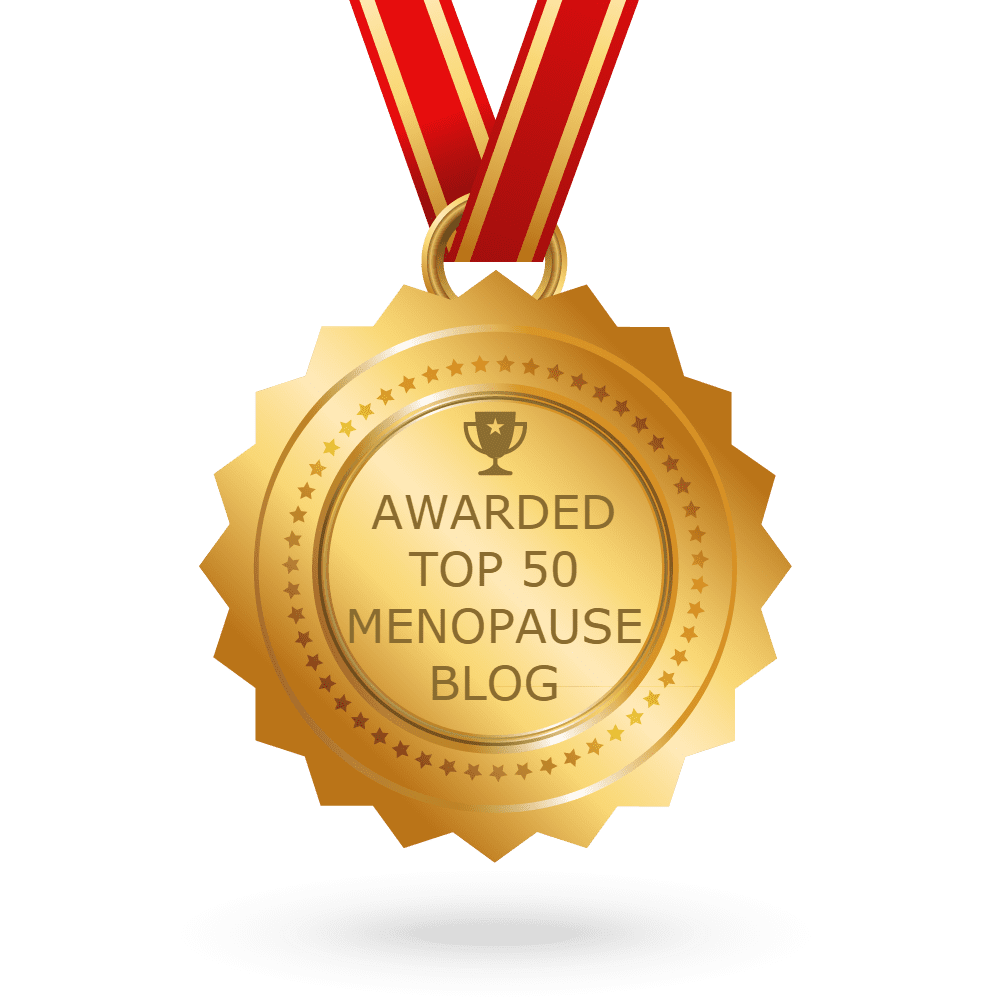Let’s talk about bladder issues.
Yes, we’re going there!
We know it’s difficult. But we also know that from perimenopause on our vagina’s begin to change and so do our bladders.
Early bladder woes
When you were in your teens and 20s did you experience “honeymoon cystitis” or recurrent bladder infections? Many of us certainly did!
And what about post-childbirth? Was urinary leakage something you struggled with?
Both scenarios might have been either mild or severe – the former sometimes leading to ‘urge’ urinary incontinence and the latter to ‘stress’ urinary incontinence. (We explain the differences below.)
As a result, you probably agree that by midlife both are something you’d rather avoid.
Indeed, if you’ve experienced the burning discomfort and urgency of bladder issues it’s not something you forget.
Common menopause symptoms
Urinary incontinence, UTI’s and an overactive bladder (OAB) are all common menopause symptoms. In light of that, let’s take away the ‘shhhh’ factor.
To clarify, one – or all three – can be part and parcel of the transition for menopausal women.
What’s more, the signs, symptoms and treatments can overlap.
Unfortunately, as with many menopause symptoms, bladder issues are something many women would rather not discuss.
That’s TMI (too much information) they emphatically cry!
Instead, they avoid social situations, burpees at the gym, drink less to try to prevent accidents and…well…soldier on.
Why can menopause lead to bladder issues?
One of the hallmarks of the menopause transition is decreased ovarian estrogen.
Or more specifically estradiol.
During perimenopause, estrogen goes through highs and lows before moving to lower levels in post-menopause.
Our bodies make three main types of estrogen:
- Estrone (E1) – usually stored in fat and muscle. A weaker estrogen commonly found in post-menopausal women.
- Estradiol (E2) – the strongest estrogen and the main player in women of childbearing age. Estradiol is behind the development of our breasts and curves and fat distribution. It’s the estrogen that keeps our bodies lubricated, skin plump, bones strong and brain alert.
- Estriol (E3) – the weakest estrogen – pregnancy is the only time we have a lot of it.
Estradiol is our ‘juice’, the hormone responsible for plumping and lubricating the vagina. It’s important to realise that as it decreases vaginal tissues become thinner and dryer. Subsequently, our genitals become more vulnerable to bacteria that can enter the urethra and bladder.
In addition, too much dietary sugar and things such as yeast overgrowth (Candida albicans) can all increase susceptibility to infection.
Furthermore, sexual intercourse at menopause and antibiotic resistance may also exacerbate risk and re-occurrence.
Urinary incontinence
There are commonly three types of urinary incontinence that affect us:
Stress
Stress incontinence is something most of us have experienced when we’ve laughed, coughed or sneezed with gusto.
Urge
This one is super challenging. Urinary urge incontinence comes on without warning, it basically doesn’t care where you are or what you’re doing you simply have to go. (Or pee your pants!)
Nocturia
Nocturia is when the need to pee wakes us up several times in the night. It becomes more frequent with age – interrupting sleep. Not fun. Get your free sleep tips here.
For more information read: Incontinence…Ah, Hem…Let’s Talk About It
Overactive bladder (OAB)
An overactive or irritable bladder becomes more common in women aged over 40. This is often due to the weakened pelvic floor and/or bladder contraction muscles.
Risk factors can include excess weight, specific medications and foods that irritate the bladder such as alcohol and caffeine.
Cystitis aka UTI
Cystitis is the technical term for a lower bladder infection caused when bacteria get inside your urinary tract.
Symptoms include:
- Needing to pee immediately (and then nothing comes out)
- More frequent urination
- Pain or burning while peeing
- Smelly urine
- Pelvic or back pain
- Fever/chills
NB: If you’re older some of these symptoms may not be felt so you might not realise you have an infection. Or you could put a fever, chills or fatigue down to something else.
A word of warning
Neglect UTI’s at your peril because the infection can sometimes spread to your kidneys. This is when it affects the upper urinary tract and is known as Pyelonephritis. And if it’s not treated it can lead to serious issues such as sepsis.
The (sometimes surprising) causes of cystitis
- Changes in estrogen during menopause
- Not drinking enough water
- Holding on to pee for too long
- Not wiping ‘front to back’ after pooping
- Sexual intercourse
- A weakened pelvic floor so the bladder doesn’t fully empty
- Laundry detergents
- Soaps
- Scented toilet paper
- Sanitary pads
- Tight-fitting underpants or trousers
- Tights
- G-strings
So what’s a girl to do?
1. Drink more water
2. Try high strength cranberry capsules
The hypothesis is that cranberries contain proanthocyanidins (PACs) which interfere with the bacteria’s ability to adhere to the bladder wall. However, juice doesn’t cut it. Apparently, you’d need to drink a lot of sugar-free, concentrated juice to get the same effect.
3. Avoid sugar in your diet
Sugar feeds unhealthy bacteria and yeast, leading to yet more painful symptoms.
4. Don’t hold it in!
Pee often, especially before and after sex.
5. Try supplementation
Zinc, D-Mannose, high dose vitamin C, magnesium and vitamin D have all been found to be helpful with urinary incontinence. D-Mannose is particularly helpful for urinary tract infections (UTI’s).
We include vitamin D in Perky Post®.
6. Avoid wearing potentially disruptive garments
Tight-fitting underwear and clothing can cause friction.
7. Swap your personal care products to more natural brands
Highly fragranced products can be irritating.
8. Always shower after sex
‘Nuff said.
9. Invest in pelvic floor training.
Pelvic floor training with a specialist physiotherapist can be immensely helpful. So can doing your Kegels. Additionally, there are also various tools available now – we like the Elvie.
Dr Jo’s basic pelvic floor exercises on YouTube are simple and effective.
10. Follow our 7 Wellness Pillars For Your Best Menopause
We’ve found these 7 Pillars can make a significant difference to your menopause experience. Moreover, the quality of your diet, sleep, digestion and stress management all add up to a robust immune system. And when you’re immunity’s doing well your body can withstand weakened states better.
11. Make an appointment with your doctor
He/she can give you a course of antibiotics* which should clear things up quickly. They can also ensure there are no other reasons for your symptoms including asymptomatic chlamydia.
If you’re concerned about incontinence and/or frequent cystitis ask them for a referral to a urinary specialist urologist or urogynecologist.
Bear in mind that antibiotics wipe out good bacteria as well as bad, so vaginal and intestinal flora are impacted. So ensure you take Happy Go Tummy® alongside them to love on your microbiome.
*Interestingly, the medical profession has seen increasing resistance to antibiotics for UTIs over the last 20 years. This is believed to be due to overuse.
In conclusion
We know bladder issues at menopause can severely impact your quality of life both physically and emotionally. But, the good news is, given these points – there are steps you can take to help rectify things.
If you need support, don’t hesitate to reach out.
Disclaimer:
Our articles are a guideline only. Any signs and symptoms you are experiencing could be due to a number of reasons. For this reason, this should not take the place of medical advice. If you’re experiencing ongoing signs please see your health professional.










